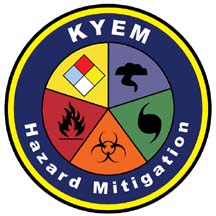 Hazard Mitigation is any action taken to eliminate or reduce the long-term risk to human life and property from natural and technological hazards. While preparedness and response may focus primarily on reacting to a disaster, mitigation is a continuous activity intended to make families and communities more disaster-resistant.
Hazard Mitigation is any action taken to eliminate or reduce the long-term risk to human life and property from natural and technological hazards. While preparedness and response may focus primarily on reacting to a disaster, mitigation is a continuous activity intended to make families and communities more disaster-resistant.
This YouTube video explains what hazard mitigation is, the type of projects it can fund and what you need to do in order to obtain project funding.
Examples of mitigation include:
- Wise management of development in flood-prone areas
- Enactment and enforcement of building codes which require structures to withstand a baseline level of disaster forces
- Acquisition or elevation of repetitively-flooded buildings
- Seismic retrofit of buildings
- Tornado safe rooms and community shelters
- Utility protective measures
- Storm water management and localized flood control projects
- The National Flood Insurance Program (NFIP) is a federal program. Participation is voluntary, but the benefits are considerable. To join, a community agrees to adopt, administer and enforce a floodplain management ordinance that meets or exceeds the minimum requirements. When communities participate in the NFIP, property owners and renters can buy flood insurance to help deal with losses from flooding.
In Kentucky, the NFIP is overseen by the Kentucky Division of Water.
For more ideas, activities/projects and funding sources that can help reduce or prevent the impacts of disasters please take a look at FEMA's portfolio of Mitigation Best Practices . You can even search for Kentucky's best efforts.